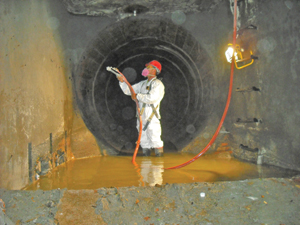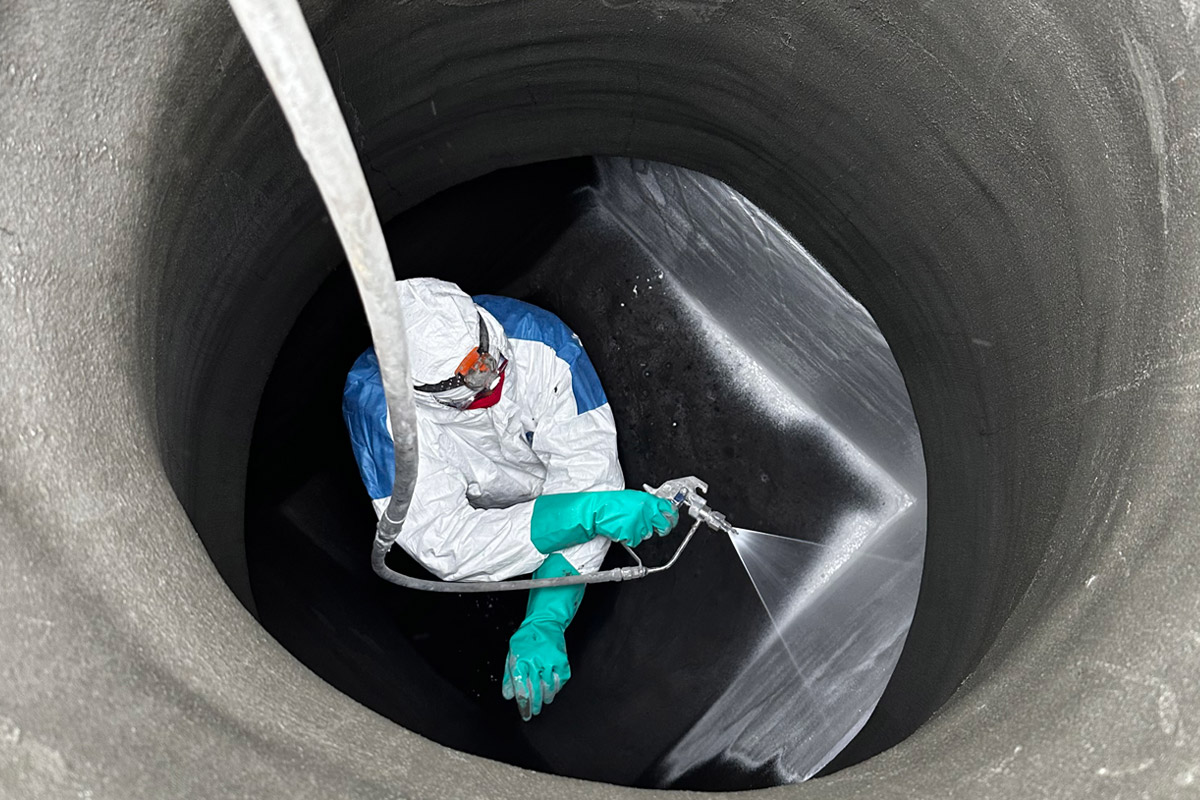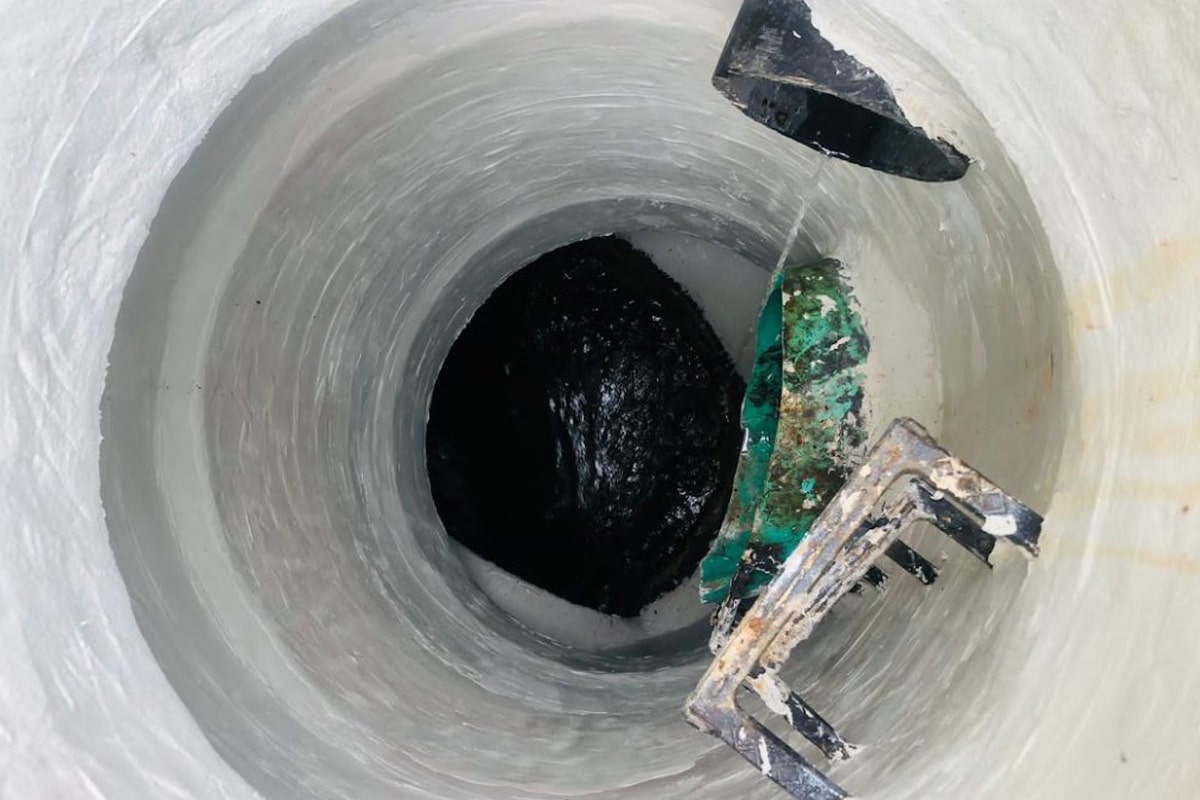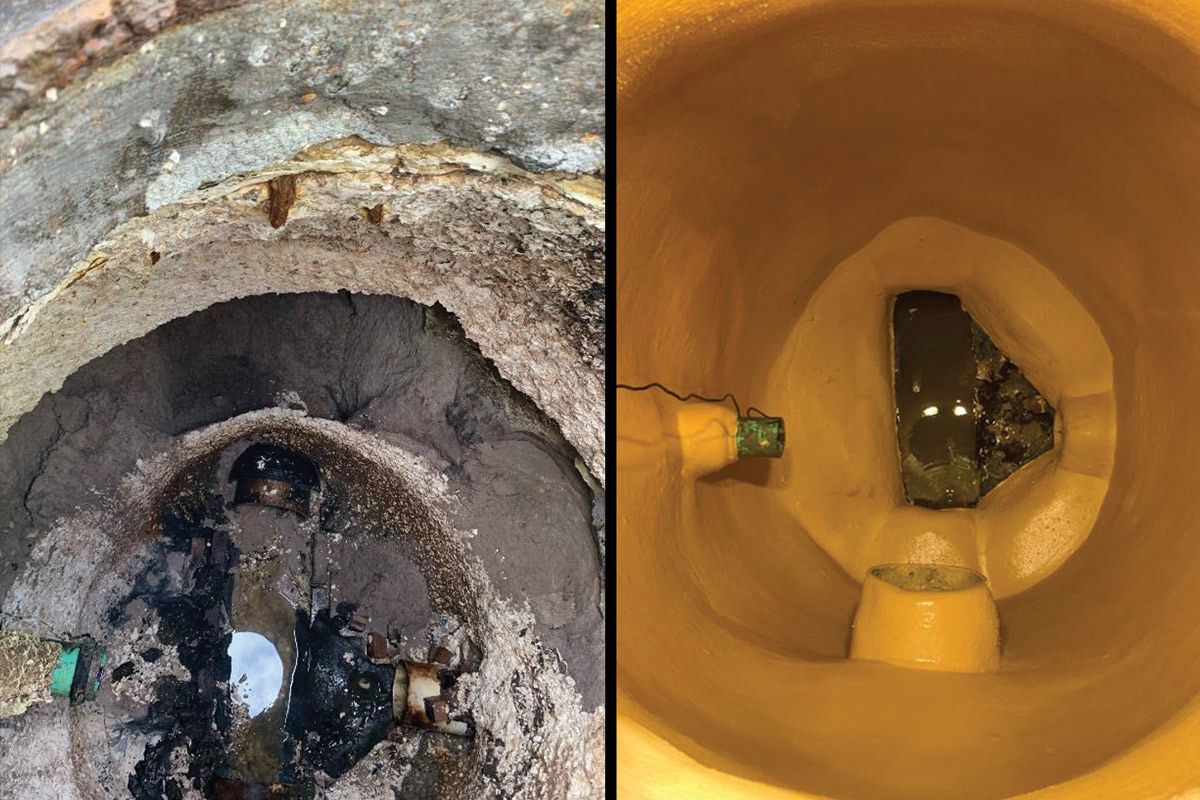Restoring Milwaukee’s Manholes
 The City of Milwaukee is home to more than 950,000 residents. As many of these residents commute to and from work on a daily basis — driving on some of the busiest streets and intersections in the metropolitan area — they were unaware of the problems that existed beneath them.
The City of Milwaukee is home to more than 950,000 residents. As many of these residents commute to and from work on a daily basis — driving on some of the busiest streets and intersections in the metropolitan area — they were unaware of the problems that existed beneath them.
The problem was an aging sewer system, with components ranging from 90 to 115 years old that were in serious need of repair. Couple that with Milwaukee’s rapidly changing weather — rain, snow and sleet — due to its location in the Great Lakes Region, the city was experiencing a myriad of problems due to its failing sewer systems. The combination of the city’s aging municipal infrastructure and frequent precipitation made conditions ripe for infiltration. These problems, which were costing the city money and were cause for environmental concern, including sewage overflows and issues with groundwater contamination.
Focus on Manholes
To help remedy the city’s infrastructure problems and help to reduce the risk of basement backups for homes and businesses and sewer overflows to Lake Michigan, the Milwaukee Metropolitan Sewerage District (MMSD) embarked on a series of rehabilitation projects, including the restoration of a large 5-ft diameter manhole that was 65 ft deep, dropping into a 10-ft x 10-ft x 10-ft deep chamber.
The manhole was rife with cracks from old age and had become a source for groundwater inflow and infiltration (I/I). As is common in these types of situations, defective manholes often serve as the crux of many overflow issues, as they are one of the primary pathways for I/I. In fact, engineering firms have estimated that up to 50 percent of measured inflow and infiltration originates from deteriorated manholes.
Taking a Step-by-Step Approach
The repair of the manhole was broken down into a three-phase process to ensure the best results. The first phase was a rapid cleaning process to remove all chemicals, debris and loose concrete from the surface, as well as to etch the substrate. This was achieved through high-pressure hyrdoblasting.
Because water infiltration was a primary concern, the second phase of the project focused on sealing active water leaks, as well as any cracks or small voids. A rapid-setting, hydraulic water plug material called Sauereisen InstaPlug No. F-180 was used for the leaks and Hydroactive Polyurethane Grout F-370, a catalyzed, hydrophobic injection liquid that expands in the presence of moisture, was used for sealing the cracks. These materials bond tenaciously to the concrete, effectively sealing any cracks and voids, as well as stabilizing soil erosion that may have occurred behind the structure. Both products were beneficial because they are fast-acting and allowed the project team to quickly move forward into the final phase of the rehabilitation: adding a barrier to prevent further water infiltration and corrosion to the manhole surface.
For this, Sauereisen’s SewerSeal F-170, a durable, 100 percent calcium aluminate-bonded lining material used to prevent water infiltration in municipal collection systems, was applied. The strong, moisture-tolerant product offered the Milwaukee Metropolitan Sewerage System a cost-effective solution for eliminating infiltration and mild corrosion in the manhole. The product was applied utilizing both straight-shot (used to line the chamber at the bottom) and rotary spincast (used to line the 5-ft diameter round shaft) techniques to reach a 1-in. lining thickness. This helped to speed up the application process, especially in such a large structure. Precise mixing technologies allowed for the materials to flow through 80 ft of hose and was applied via specialized confined entry procedures and equipment.
This three-step process allowed the manhole to be quickly and safely cleaned, rehabilitated and then protected for the long-term with a corrosion-resistant and waterproof lining.
“The rehabilitation will offer at least another 50 years of additional life to the manhole for the Milwaukee Metropolitan Sewerage District,” said Justin Leszczynski, estimator and project manager for Rawson Contractors Inc., a multi-disciplined sewer, water and site contractor located in southeastern Wisconsin and the contractor on the project.
Time Is Money
While these rehabilitation solutions offered a comprehensive approach to restoring the manhole’s structural and functional integrity for years to come, a specific strategy was required to arrive at an economical solution. By reducing downtime through strategic use of products that allowed for ease of application, as well as ones that exhibited fast-setting properties, the team did just that.
Without high-quality, fast-setting products, the project team can lose days worth of time. With the crew having to spend hours just on traffic control alone, the materials needed to work as planned and in the quickest amount of time as possible. Lost time equals lost money and, particularly in today’s economic environment, municipalities cannot afford to waste either of these valuable resources. Additionally, in Milwaukee’s case, extra time meant additional headaches for the residents and businesses due to the traffic flow disruption throughout the area.
In effect, those residents and business owners — the ones who pay taxes to ensure the maintenance and effectiveness of the city’s infrastructure — are the municipality’s end customer. By using quality products below ground, the municipality was able to increase the life cycle of the structures, decrease the time it took to apply them and have them working to fight inflow and infiltration, as well as keep the traffic headaches to a minimum above ground. And that makes for many happy customers.
Steve Kelso is the Midwest regional manager for Sauereisen Inc. Kelso has 15 years of experience working in the industrial and wastewater linings and coatings industry.




